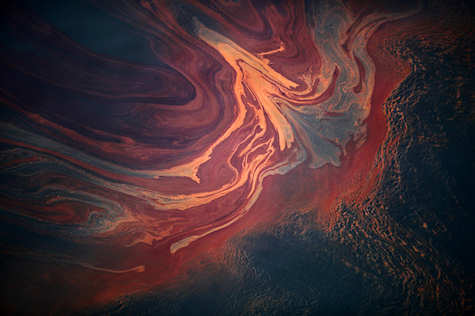 As a follow-up to my earlier article on the Deepwater Horizon crisis, here are lead-ins and links to two more articles on the duration of oil spills in nature, and on the limited liability of aggressive polluters according to recent Supreme Court rulings.
As a follow-up to my earlier article on the Deepwater Horizon crisis, here are lead-ins and links to two more articles on the duration of oil spills in nature, and on the limited liability of aggressive polluters according to recent Supreme Court rulings.
*********************************
More than 20 years after the Exxon Valdez foundered off the coast of Alaska, puddles of oil can still be found in Prince William Sound. Nearly 25 years after a storage tank ruptured, spilling oil into the mangrove swamps and coral reefs of Bahia Las Minas in Panama, oil slicks can still be found on the water. And more than 40 years after the barge Florida grounded off Cape Cod, dumping fuel oil, the muck beneath the marsh grasses still smells like a gas station.
"The conventional wisdom then was that the oil would only last for a few days," says marine chemist Chris Reddy of the Woods Hole Oceanographic Institution, who is part of the "third or fourth" generation of scientists to study the Florida spill. "But in this small area you have chemical warfare still going on."... See full article (May 14, 2010)
*********************************
 Oil giant ExxonMobil will pay the equivalent of 24 hours worth of petroleum sales to the people impacted by the 11 million gallons (41.5 million liters) of crude oil spilled into Prince William Sound in Alaska in 1989 when the drunken skipper of the Exxon Valdez allowed the tanker to run aground, according to a U.S. Supreme Court decision. The ruling caps the total damages assessed to the company at $507.5 million, a fraction of the $5 billion a jury initially awarded in 1994.
Oil giant ExxonMobil will pay the equivalent of 24 hours worth of petroleum sales to the people impacted by the 11 million gallons (41.5 million liters) of crude oil spilled into Prince William Sound in Alaska in 1989 when the drunken skipper of the Exxon Valdez allowed the tanker to run aground, according to a U.S. Supreme Court decision. The ruling caps the total damages assessed to the company at $507.5 million, a fraction of the $5 billion a jury initially awarded in 1994.
"This means that corporations like Exxon can simply put a price tag on the destruction of our marine life, our oceans and, ultimately families," says Jim Ayers, Juneau-based vice president at marine environmental group Oceana and the first executive director of the trust set up to manage the recovery and restoration of the sound. "They can estimate the value of that loss, put it into the expense column and roll forward with blatant disregard."
Although the recovery is nearly complete, aftereffects of the massive spill can still be found in the area, according to supervisory research chemist Jeffrey Short at the National Oceanic and Atmospheric Administration's Alaska Fisheries Science Center. "We've been tracking the long-term effects of the spill because it's such a clear example. [We] don't have a lot of other pollution sources to confound the picture," he says. "The animals that have had the most difficulty bouncing all the way back are sea otters, sea ducks and possibly some intertidal fish."
Sea otters that have been contaminated by oil can still be found in the sound and two killer whale pods have been devastated, among other environmental impacts. "One is in big trouble and the other is almost certain to go extinct," Short says. "Bottom line is they're not reproducing," even though almost all of the oil is gone.... See full article (June 27, 2008)